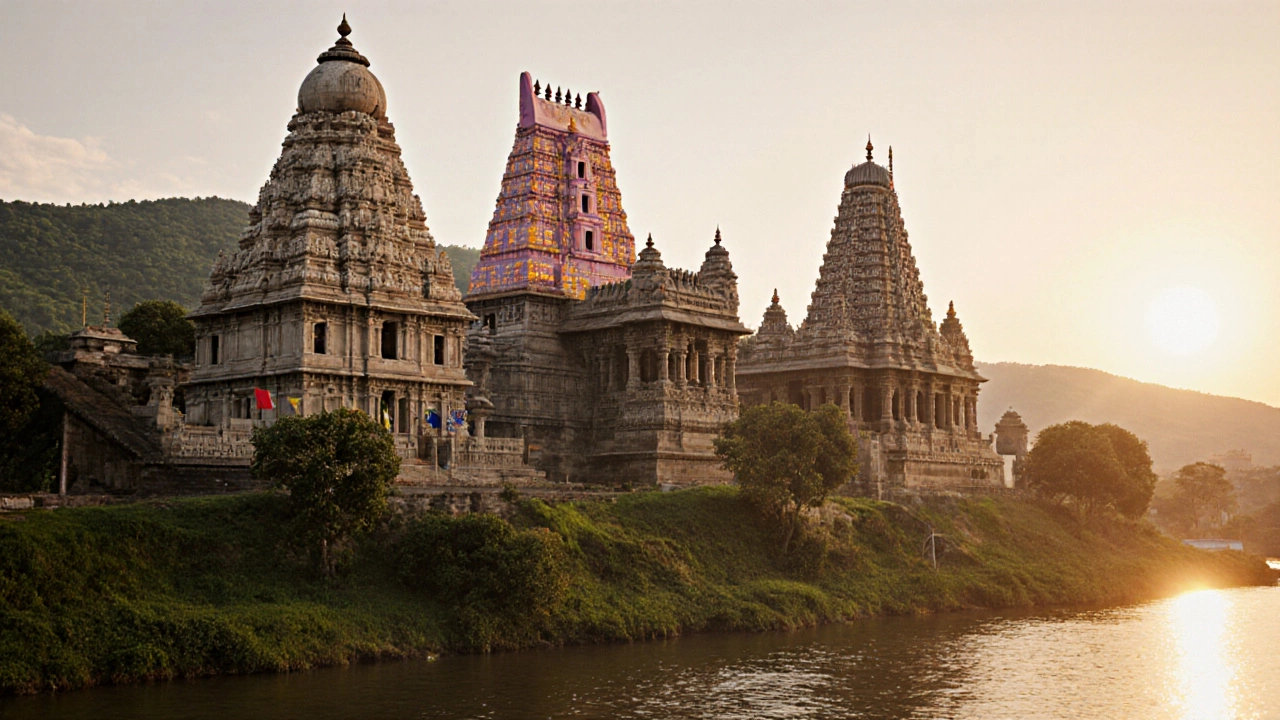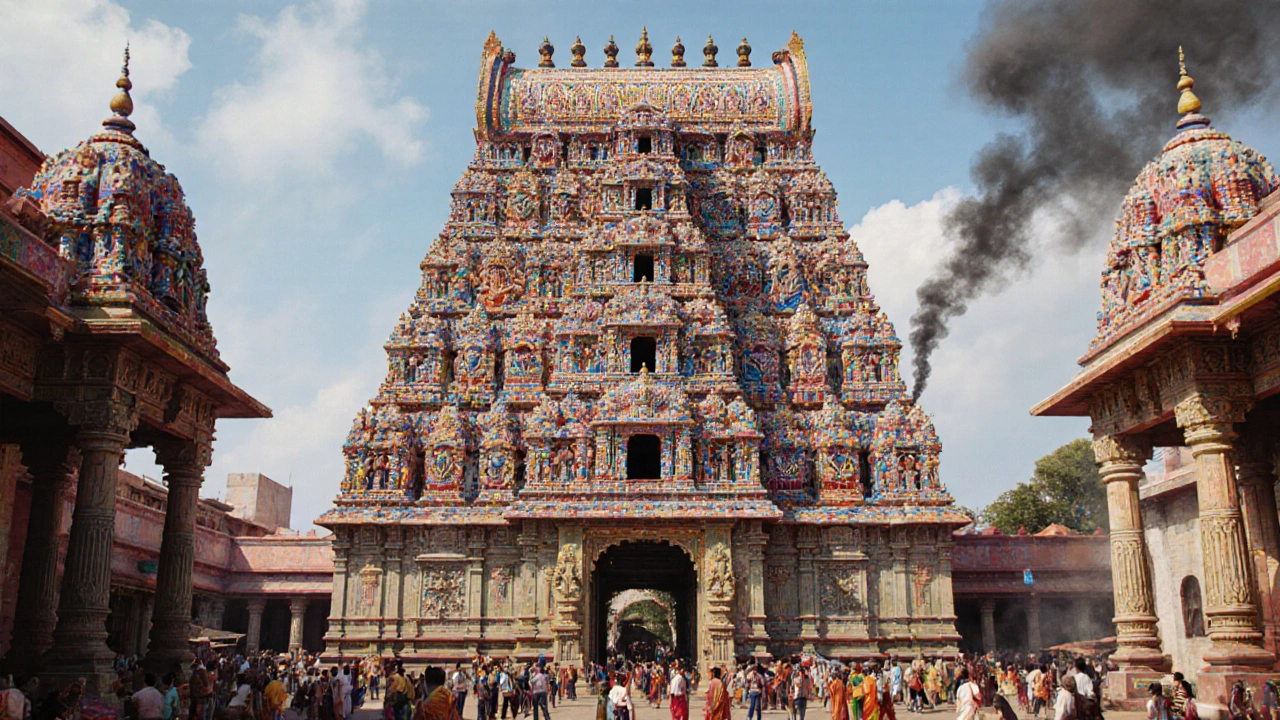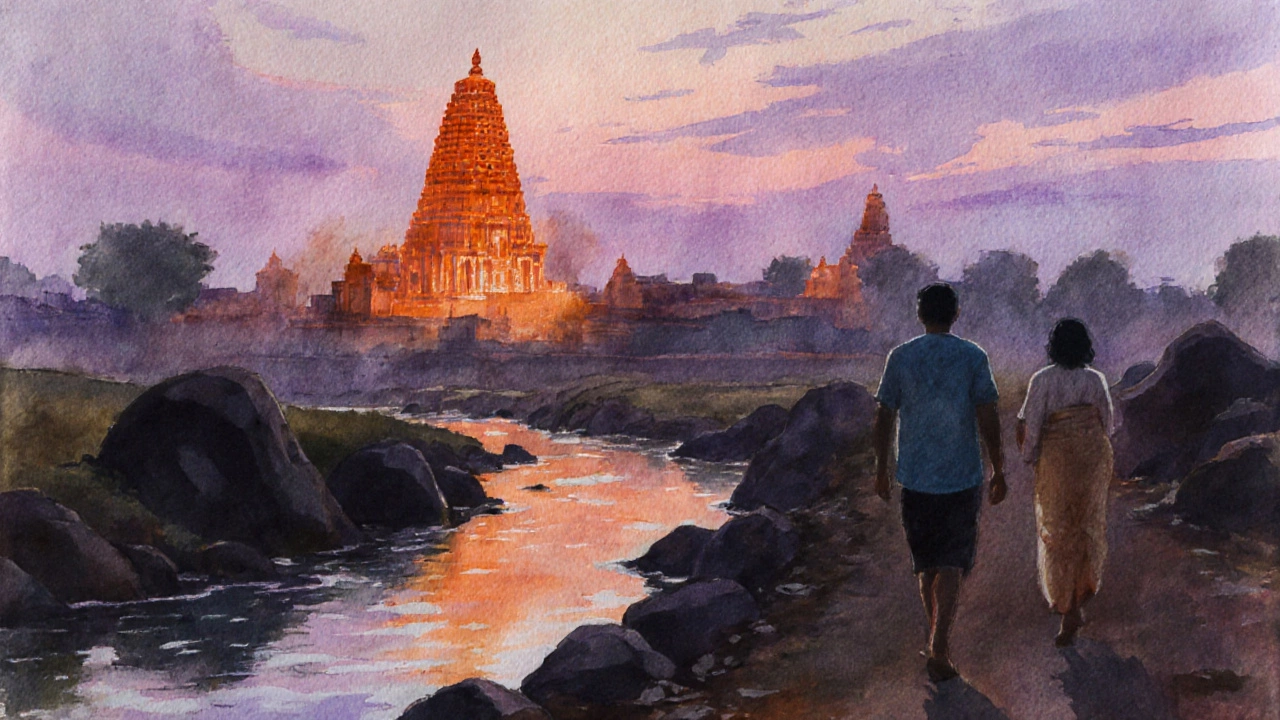Most Beautiful Temples to Visit in India
 Oct, 23 2025
Oct, 23 2025
Indian temple is a sacred architectural form that reflects the country’s diverse religious, cultural, and artistic traditions. From soaring shikharas in the north to intricate gopurams in the south, these structures are not just places of worship but also living museums of stone, marble, and gold. If you’re wondering which temple is beautiful in India, this guide walks you through the most stunning examples, how to choose them, and practical tips for a seamless temple tour.
How to Spot a Truly Beautiful Temple
Beauty in architecture is subjective, but a few concrete criteria help separate the awe‑inspiring from the merely historic:
- Architectural style: Does the design showcase a distinctive regional style, such as Dravidian, Nagara, or Kalinga?
- Craftsmanship: Look for intricate carvings, sculpted pillars, or elaborate metalwork that demonstrate masterful artisanship.
- Setting: A temple perched on a hill, beside a river, or against a dramatic skyline often feels more enchanting.
- Living tradition: Active worship, festivals, and rituals add an intangible charm that static monuments lack.
- Preservation: Well‑maintained sites let visitors appreciate original colors, mosaics, and frescoes.
When you weigh these factors, you’ll quickly see why the following temples consistently rank among the most beautiful.
Top 10 Most Beautiful Temples in India
Each temple below is highlighted for its visual splendor, cultural significance, and visitor experience.
1. Golden Temple, Amritsar
The Golden Temple, or Harmandir Sahib, glitters with a gold‑leaf façade that reflects the surrounding Amrit Sarovar. Its sanctum is built of marble, while the upper dome is covered in pure gold, creating a surreal mirror effect at sunrise and sunset. The temple’s serene pool and the daily langar (community kitchen) provide a unique blend of beauty and hospitality.
2. Meenakshi Amman Temple, Madurai
Meenakshi’s massive, multi‑tiered gopurams are a riot of color, each covered in thousands of carved figures-gods, demons, animals, and mythic stories. The sprawling complex stretches over 45 acres, and the temple’s inner mandapam boasts towering pillars that seem to defy gravity.
3. Brihadeeswarar Temple, Thanjavur
Also called the Big Temple, this Chola masterpiece features a 66‑meter tall vimana (tower) built entirely of granite. The massive Nandi statue, carved from a single stone, sits proudly in front, and the precision of the stone joints still baffles engineers today.
4. Jagannath Temple, Puri
Renowned for the annual Rath Yatra (Chariot Festival), the Jagannath Temple’s massive, gilded towers rise against the Bay of Bengal. Its massive wooden doors, intricate woodwork, and the iconic deities of Jagannath, Balabhadra, and Subhadra attract millions of pilgrims each year.

5. Konark Sun Temple, Odisha
Designed as a gigantic chariot with twelve exquisitely carved stone wheels, the Sun Temple is a rare example of an astronomical monument. Its elaborate relief panels narrate myths, daily life, and celestial movements, making it a visual encyclopedia in stone.
6. Khajuraho Group of Monuments, Madhya Pradesh
Famous for erotic sculptures, Khajuraho’s temples also boast soaring spires and delicate carvings of gods, dancers, and celestial beings. The Western Group’s temples-especially the Kandariya Mahadev-are celebrated for their sheer elegance.
7. Rameshwaram Ramanathaswamy Temple, Tamil Nadu
Set on an island off the coast of Sri Lanka, this temple’s massive corridors (the Padi) feature 36,000 intricately carved pillars, each unique. Its sanctum houses one of the twelve Jyotirlingas, adding spiritual weight to its visual grandeur.
8. Kashi Vishwanath Temple, Varanasi
Perched on the banks of the Ganges, Kashi Vishwanath glitters with gold plating and a towering spire that dominates the skyline. The temple’s bustling surroundings, lit by countless oil lamps, create an ethereal nightscape.
9. Mahabodhi Temple, Bodh Gaya
Built on the spot where Buddha achieved enlightenment, the Mahabodhi Temple’s massive brick structure is topped with a golden dome. Its serene gardens and ancient Bodhi tree add a tranquil, almost mystical atmosphere.

10. Virupaksha Temple, Hampi
Located among the ruins of the Vijayanagara empire, Virupaksha’s towering gopuram and richly carved mantapas overlook a sprawling landscape of boulders and river valleys, making it a photographer’s dream.
Quick Comparison of the Top 5 Beautiful Temples
| Temple | Location | Architectural Style | Year Completed | Signature Feature |
|---|---|---|---|---|
| Golden Temple | Amritsar, Punjab | Sikh Islamic‑fusion | 1604 CE | Gold‑plated dome over reflective pool |
| Meenakshi Amman Temple | Madurai, Tamil Nadu | Dravidian | Early 17th century | Colorful, 9‑tiered gopurams |
| Brihadeeswarar Temple | Thanjavur, Tamil Nadu | Chola Architecture | 1010 CE | Monolithic granite vimana |
| Jagannath Temple | Puri, Odisha | Kalinga | 12th century | Annual Rath Yatra chariots |
| Konark Sun Temple | Konark, Odisha | Kalinga | 13th century | Stone chariot with 12 wheels |
Travel Checklist for a Temple Tour
- Dress modestly: shoulders and knees covered; avoid tight or transparent clothing.
- Carry a small bottle of water; many temples restrict outside food.
- Respect photography rules: some inner sanctums prohibit cameras.
- Plan visits around festivals for extra vibrancy-but also expect crowds.
- Check opening hours; many temples close during midday for rituals.
- Bring a reusable cloth for shoe removal; many sites have shoe racks.
Pro Tips & Common Pitfalls
beautiful Indian temples can be found off the typical tourist path. Here are a few insider tips:
- Hire a local guide at heritage sites like Khajuraho or Hampi. Their stories turn stone carvings into living history.
- Travel early in the morning to beat the heat and the crowds, especially at popular spots like Meenakshi and the Golden Temple.
- Use regional trains for scenic routes; the Nilgiri Mountain Railway offers breathtaking views en route to temples in the Nilgiris.
- Carry cash for small donations; many smaller shrines rely on visitor contributions.
- Mind the etiquette: never step on the sanctum floor, never touch idols (unless permitted), and always remove shoes.
Frequently Asked Questions
Which Indian temple is the most photographed?
The Golden Temple in Amritsar tops the list because its gold‑plated dome mirrors the surrounding pool, creating a picture‑perfect scene at sunrise and sunset.
Do I need a visa to visit temples in India?
Yes. Most travelers need a tourist visa. Some nationalities qualify for an e‑visa, which can be applied for online before arrival.
Are there entry fees for the temples?
Major temples like the Golden Temple, Meenakshi, and Brihadeeswarar are free. However, heritage sites such as Khajuraho and Konark charge a nominal fee for conservation.
What is the best time of year to tour Indian temples?
October to March offers pleasant weather across most regions. This period also aligns with major festivals like Diwali, Navratri, and Pongal, adding cultural color to your visit.
Can I take photos inside the sanctum?
Rules vary. Most major temples prohibit photography inside the inner sanctum, but the courtyards and exteriors are generally allowed. Look for signage or ask a guide.